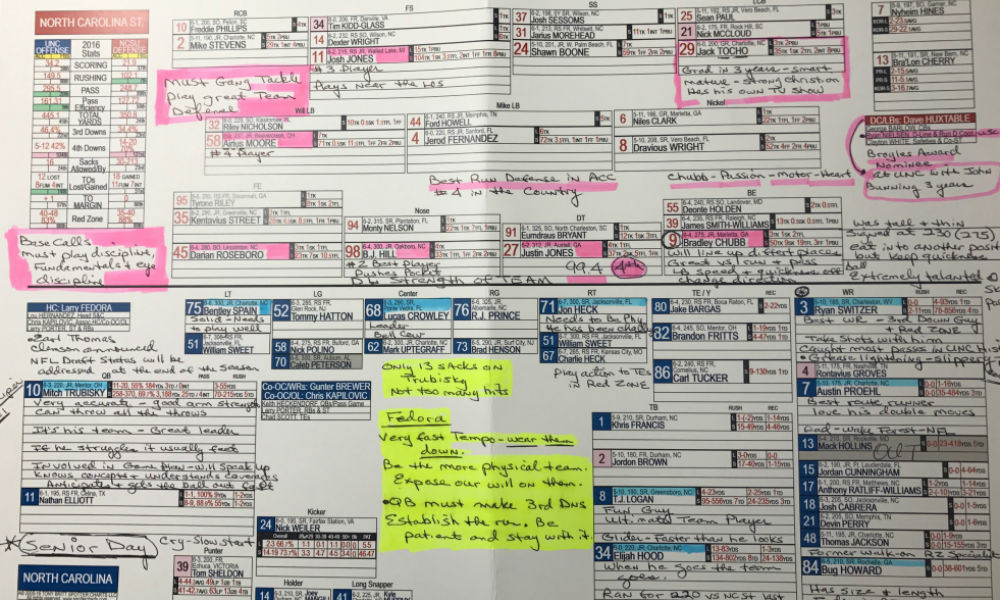ISAT capstone revolutionizes sports broadcasting software
Integrated Science and Technology
SUMMARY: JMU Integrated Science and Technology (ISAT) capstone project links students with bigtime sports announcers for ESPN and the NCAA.
By: Caroline Whitlow | Creative Services
Shortly after sports communication professional Tony Britt moved to Harrisonburg, he struck up a casual conversation with another father, ISAT professor Morgan Benton, on the sideline of his daughter’s soccer game. This introduction turned into a collaborative project that linked students with bigtime sports announcers for ESPN and the NCAA.
Britt had recently started his own company that produced charts for announcers of football games. The charts include names, numbers, positions, hometowns, and records of all athletes involved in a given game. Having this information laid out allows for announcers to quickly find and rattle off relevant facts while on the air.
“Whenever you watch or listen to a football game, the announcers seem like living encyclopedias of knowledge about the players. Many of them do have very good memories, but for the most part, they need a cheat sheet,” said Benton. “Tony had the idea to come up with a standardized template that announcers could use to call games that would save them a lot of time and effort.”
Tony Britt’s Spotter Charts was one of the only businesses in the nation that provided accurate pre-made charts to broadcasters, who previously resorted to making them themselves by taping manila folders together. But although Britt’s charts proved both popular and useful in the sports communication world, he still produced each chart by hand, which could take upwards of eight hours for each.
As Britt made small talk with Benton at the soccer game in Harrisonburg, he learned of Benton’s work as a faculty member at JMU. He wondered if software could be developed to simplify the creation of such elaborate charts. Benton immediately thought to involve his upper-level ISAT students and invited Britt to speak with a class of juniors who were preparing for their capstone project.
“He thought student involvement was a great idea,” said Benton. “After he talked to the class, the students had a lot of interest in the project.”
Although several students wanted to work with Britt, the intensive summer workload required to meet the fall football season deadline only allowed two students to complete the project. Adam Maas and Jason Farber, Class of 2012, developed the software still used by major sports broadcasters today.
“The two of them and I worked on all of the coding. We had a good season that year. The company’s gross income was more than double what Tony was making on his own when he made them by hand,” said Benton.
Maas now works for Tony Britt’s Spotter Charts as a minority partner, handling technology aspects while Britt handles marketing. The pair also works with 16 seasonal contractors.
This student capstone project has brought national attention to JMU and the ISAT program, with mention of students in major media outlets such as The Washington Post. It has also revolutionized sports broadcasting by making the work of spotters and announcers more personalized, organized and efficient.
More information about Tony Britt’s Spotter Charts can be found on the company website and in The Washington Post.
